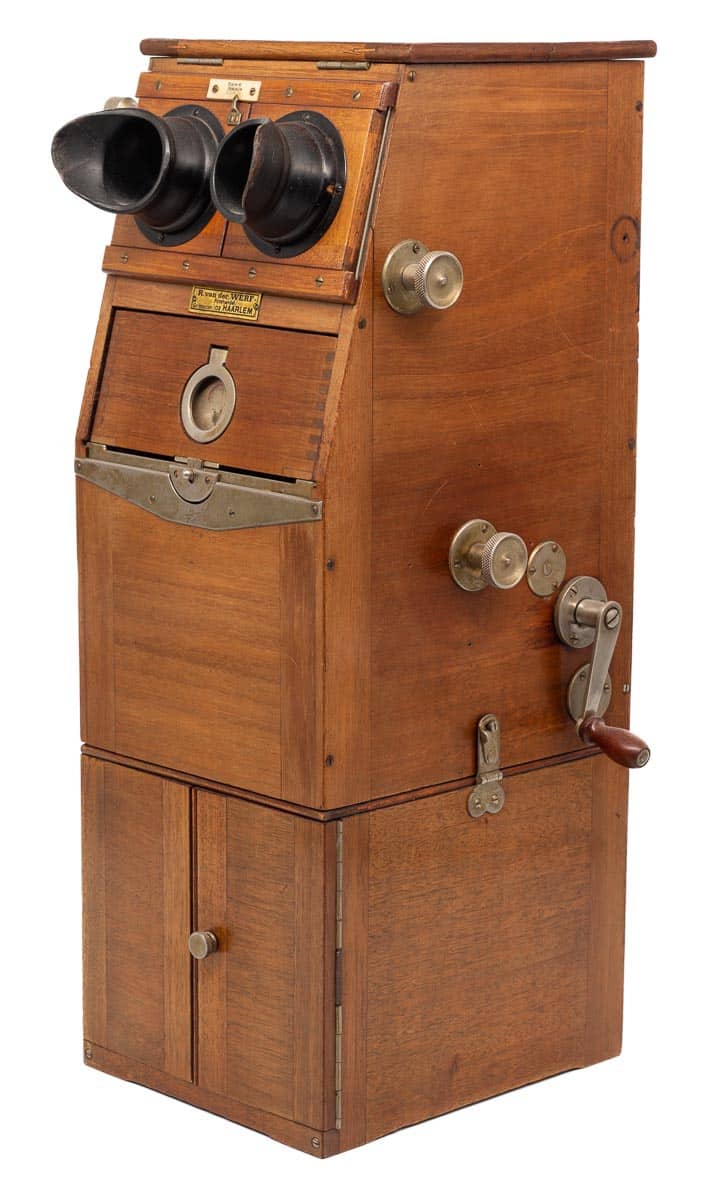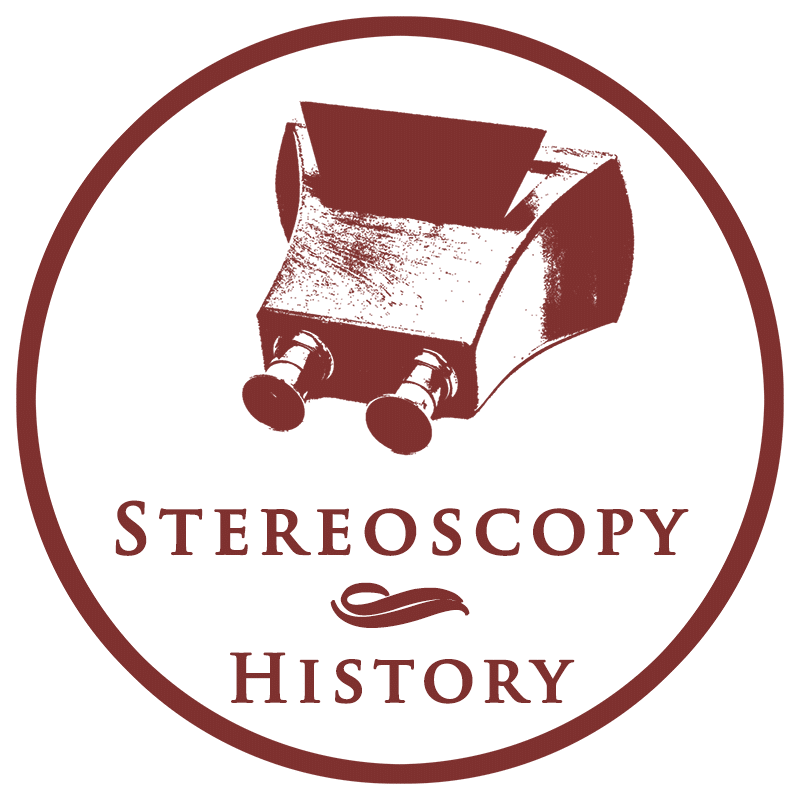
The Magazin Stereobetrachter was Ernemann’s only tray-based stereoscope. The stereoscope is very compact for a viewer with an advanced multi-view mechanism. The viewer (without the cabinet) is hardly any larger than a Multiphote, a simple viewer without a mechanism. The Magazin Stereobetrachter was only available for the 45 x 107 mm format.
The stereoscope contains the new Ernemann logo that was used after a collaboration between Ernemann and Friedrich Krupp AG in 1920. It replaced the famous logo with the Goddess of light. The top of the viewer can be opened, and one of the two top lids contains a mirror that directs more light into the viewer. An indicator knob can be used to navigate the tray quickly to a specific image.
A copper nameplate on the front panel contains a Dutch retailer plate with R. van der Werf Fotohandel – Gr. Houtstr. 102 Haarlem, which refers to Rinnert van der Werf (1868–1945). Van der Werf was born in Harlingen and started his career as a pastry chef. He was active as a photographer until 1920. From 1920, he focused entirely on his photography business, which was located at the Grote Houtstraat in the center of Haarlem.
Specifications
| Manufacturer: | Ernemann, Dresden |
| Year of introduction: | c. 1913 |
| Year of manufacture: | 1920–19251 |
| Type: | Tabletop |
| Viewer: | Multi-view |
| Mechanism: | Tray-based |
| Bidirectional navigation: | Yes |
| Serial number: | 1081251 |
| Stereoview support: | Glass |
| Stereoview format: | 45 x 107 mm |
| Number of slides: | 20 |
| Lens focussing: | Yes |
| Inter-ocular adjustment: | Yes |
| Eyepiece blinders: | Yes |
| Construction: | Mahogany |
Glossary: inter-ocular adjustment / multi-view / tabletop / tray-based
Ernemann
In 1889, Heinrich Ernemann formed together with Wilhelm Franz Matthias the Dresdner photographische Apparate-Fabrik Ernemann Matthias. Matthias left the company in 1891, and Ernemann continued the business activities alone. From 1899, the company was called Heinrich Ernemann, Aktiengesellschaft für Camerafabrikation in Dresden. The company only produced the wooden parts of a camera, the other parts were supplied by other manufactures. It switched to the production of complete cameras later, and Ernemann became a renowned manufacturer of photographic and film cameras. During the company’s lifecycle it produced a wide range of high-end cameras, but it also manufactured hand-held and tabletop stereoscopes.
The factory was located in the Striesen district of Dresden and was expanded in phases. The original building dated from 1898 and contained the mosaic Lichtgöttin (goddess of light). It was designed by the Art Nouveau painter Hans Unger. It was the famous trademark from 1903 to 1920. The factory was expanded with a central tower after the First World War. The buildings still exist today and the tower is now known as the Ernemann Tower. In 1926, Ernemann merged with ICA, Goerz and Contessa-Nettel to the new Zeiss Ikon company.
References
- Göllner, P. (1995) Ernemann Cameras. p. 234. ↩︎
